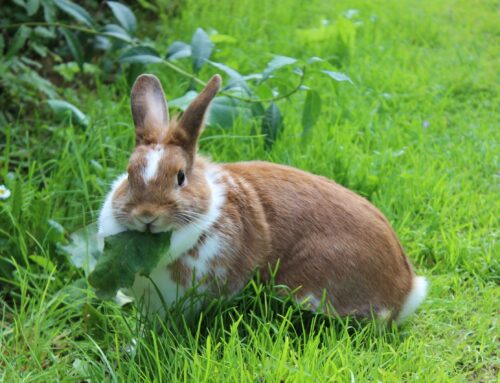Socialisation is the process of getting new pets accustomed to their new environment, along with learning appropriate behaviours. The aim is to introduce a wide variety of people, situations and animals, and to give them a chance to explore. Although easy to do, it does take time, patience, regular effort and planning. It will give your pet the best chance of leading a happy life and being a great pet. A puppy or kitten who lacks experience in the world may find things we are used to scary, growing into an anxious pet, more likely to develop behaviour problems.
When do I get started?
The peak socialisation period in pups is between 3-12 weeks of age. In cats it’s earlier at 2-7 weeks of age.
This period starts before you get them, so getting a kitten (or pup) from an environment similar to the one they will be living in gives you a head start. For example, a house with children, or other pets, if that is what they will face.
Puppies and kittens will approach most things without much fear in this period, becoming cautious of anything not yet encountered as they age. That said, it IS possible to ‘teach old dogs new tricks’ – it’s just harder!
How should I go about it?
Fear and punishment don’t work and may lead to behaviour issues and aggression in dogs and disappearance of cats. Socialisation should always involve positive experiences. If rehoming an older puppy or herding breeds such as collies and German shepherds, prone to fearfulness, pay extra attention to this critical period.
Socialisation vs vaccination
Young animals don’t have a fully effective immune system so are susceptible to disease. Keeping them isolated until their immune system is ready and their vaccinations have “kicked in” will have a negative effect on socialisation, so a compromise is needed.
Until fully vaccinated, we suggest that you only allow pets to mix with vaccinated and well pets, in areas where other pets or wild animals have not been. As cats should not go out until neutered, they are less at risk of outside infection. Pups should be carried outside to gain experiences with low risk.
Getting your pet used to humans
Get your pup or kitten slowly used to being touched all over, lifted and gently restrained for short bursts of time. This prepares them for future handling.
Research shows if kittens are handled by four or five different handlers (preferably varying gender and age) before seven weeks of age, they will be more sociable. Cats handled by only one person may be suspicious of humans generally (presumably except for their “special” person). Similarly, with pups, the more people your puppy has positive experiences with, the more sociable they will become.
It’s important not to force situations, though, as pups and kittens are quick to be overwhelmed. Learn to read your pet’s behaviour. Wagging tail and ears forward indicate your pup is happy. Fearful pups have their tail down, ears back, lick their lips or yawn a lot. Fearful cats may have dilated pupils, a low stance, flattened ears and hiss. If you notice fear, let your pet retreat to a place of comfort.
Ask new people to crouch down, allowing them to make the first move, at their own pace. Avoid picking them up until they are happy.
Treats can help make this process more positive, but pups may take food even when scared, then panic, so throw treats nearby and wait for them to venture closer.
Engineer positive experiences at friends’ homes with men, women, and children of varying ages. Create a checklist of things they may meet in life: the postman, bikes, people with hats or glasses on, etc. Get creative and play dress up! However, avoid too many people giving treats to pups. This may lead to the expectation that human = treat. You want your pet to enjoy meeting people, not see them as food…
If your pet will be spending time alone, it’s important to start this process early to avoid separation anxiety. Get your pet used to its own space from an early age. While a cute puppy in your bed might be tempting, think ahead. When aged you may find yourself carrying that 30kg dog up and down the stairs.
Home comforts
Simple things like hoovers, hairdryers and washing machines may all induce fear if not introduced early. Build experiences day by day, making sure your pet can escape to a place they feel safe if overwhelmed.
The outside world
Once confident in the home, take your pup out frequently, taking care not to overwhelm them. Introduce them to new sounds of the city, or the country, and to new smells, people and experiences.
Situations that happen periodically such as fireworks may require special attention. Desensitisation CDs can be used to slowly get them used to firework noise so it is not a shock when the season approaches.
Other furry friends
Puppies and kittens learn to interact by spending time with their siblings and mother.
In a new home it is important that they continue to learn appropriate behaviour with other animals.
Puppies can be introduced to other puppies and well-behaved adult dogs of all varieties. A bad experience is worse than none at all, so engineer some good ones! They will learn how far to push play, and how to communicate. You can intervene if games get too boisterous, by getting them to focus on something else. Good puppy classes help socialisation but shouldn’t be relied upon. It’s a short space of time, so most of the work is done by you, away from the class.
Introducing your kitten to another household cat can be more problematic, requiring more planning and caution, so do ask us for more details.
Socialising your puppy or kitten with members of another species should be done slowly.
Experiences during this crucial period can shape your pet’s future character, behaviour and contentedness. Please do ask our team for more socialisation tips, information and resources.



